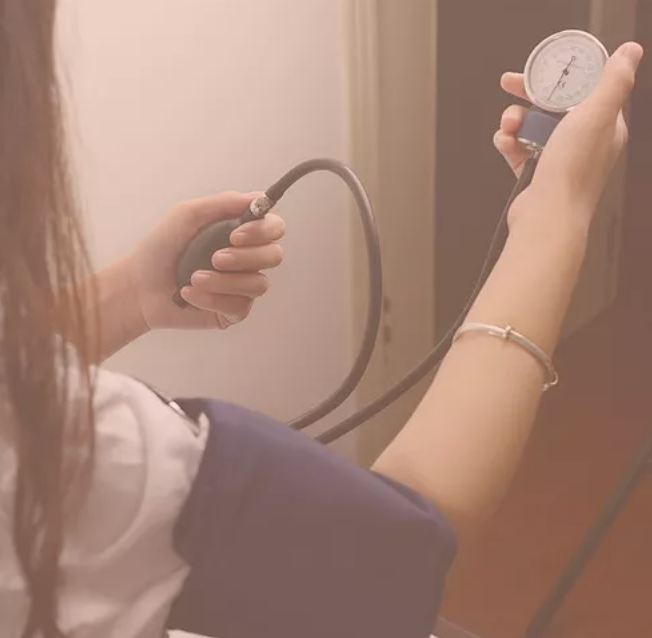Views: 0 Author: Site Editor Publish Time: 2025-10-24 Origin: Site
Measuring blood pressure (BP) is an essential task in healthcare, as it provides valuable insight into a person's cardiovascular health. An aneroid sphygmomanometer is one of the most commonly used devices to take accurate blood pressure readings manually. While digital devices have become more popular, the aneroid sphygmomanometer remains a reliable and cost-effective tool in both clinical and home settings.
In this guide, we will walk you through the proper technique for using an aneroid sphygmomanometer to measure BP. You’ll learn how the device works, its components, the steps for accurate measurement, and some tips for avoiding common mistakes. By the end of this article, you'll be equipped with the knowledge to take blood pressure readings effectively and confidently.
An aneroid sphygmomanometer is a medical instrument used to measure blood pressure without the use of mercury. Unlike mercury sphygmomanometers, which rely on a column of liquid mercury to measure pressure, the aneroid version uses a dial gauge that is connected to a cuff. This device is more portable, easier to use, and safer than traditional mercury-based devices.
Pressure Cuff: The cuff is wrapped around the patient's upper arm to temporarily stop blood flow.
Gauge (Dial): This dial shows the pressure readings in millimeters of mercury (mmHg).
Inflation Bulb: The bulb inflates the cuff around the arm to restrict blood flow.
Release Valve: This valve controls the release of air from the cuff to measure blood pressure.
Stethoscope: Used to listen to the Korotkoff sounds, which correspond to systolic and diastolic pressures.
Measuring blood pressure is an essential part of routine medical check-ups. High or low blood pressure can lead to severe health problems, including heart disease, stroke, and kidney failure. Monitoring blood pressure regularly allows healthcare providers to detect abnormalities early and make informed decisions about treatment.
The aneroid sphygmomanometer works by measuring the force of blood against the artery walls. It consists of a cuff that inflates to restrict blood flow temporarily. As the cuff is deflated, the examiner listens for two distinct sounds through a stethoscope. The first sound represents systolic pressure (when the heart contracts), and the disappearance of sound represents diastolic pressure (when the heart relaxes). The reading on the dial corresponds to the pressure levels in the arteries.

Measuring blood pressure with an aneroid sphygmomanometer requires precision and technique. Here are the steps you need to follow for accurate readings:
Before taking a blood pressure measurement, ensure the patient is properly positioned:
Sit in a Relaxed Position: The patient should sit comfortably with their back supported, and their feet flat on the floor.
Arm Position: The arm should be at heart level. Rest the arm on a flat surface, such as a table, for proper support.
Rest time: Allow the patient to rest for at least 5 minutes before taking the reading.
Cuff Placement: Place the cuff around the upper arm, about 1 inch above the elbow. Ensure the cuff is snug but not too tight.
Correct Size: Choose the correct cuff size for the patient. A cuff that is too small or too large will lead to inaccurate readings.
Position of Tubing: The tubing should be aligned along the inside of the arm and should not be twisted or kinked.
Stethoscope Placement: Place the diaphragm or bell of the stethoscope on the brachial artery, just below the cuff. The stethoscope should not touch the cuff to avoid interference with the sounds.
Inflation: Close the valve on the bulb by turning it clockwise. Rapidly inflate the cuff to about 180 mmHg or 30 mmHg above the expected systolic pressure.
Checking for Pulse: Feel for the pulse at the wrist to make sure the cuff is tight enough to block the blood flow, but not too tight that it’s uncomfortable.
Release Air: Slowly open the release valve to deflate the cuff at a rate of 2-3 mmHg per second.
Listen for Sounds: As the cuff deflates, listen carefully with the stethoscope:
The first Korotkoff sound marks the systolic pressure, which is the pressure when the heart beats.
The last Korotkoff sound marks the diastolic pressure, which is the pressure when the heart rests between beats.
Systolic Pressure: This is the first sound you hear and corresponds to the highest pressure in the arteries.
Diastolic Pressure: This is the point where the sound disappears and corresponds to the lowest pressure in the arteries.
Note the Values: Record the systolic and diastolic pressures as separate numbers (e.g., 120/80 mmHg).
If the readings seem unusually high or low, wait for 1-2 minutes and take the measurement again. It’s important to allow the arteries to return to normal pressure before repeating the measurement.
To ensure you get the most accurate readings, follow these additional tips:
Correct Cuff Size: Always use the correct cuff size for the patient’s arm circumference. An incorrect cuff size can lead to inaccurate readings.
Proper Arm Position: Ensure the patient’s arm is at heart level. If the arm is too low or too high, it can affect the measurement.
Quiet Environment: Make sure the patient is calm and avoid distractions during the measurement. Any movement or talking can interfere with the reading.
Multiple Readings: Take multiple readings and average them for a more accurate result.
Incorrect Cuff Placement: The cuff should be placed snugly around the upper arm and at the correct height. Incorrect placement can lead to inaccurate readings.
Too Rapid Deflation: Deflating the cuff too quickly may lead to erroneous readings. Deflate the cuff slowly and steadily.
Not Listening Properly: It is essential to listen carefully for the Korotkoff sounds. Missing a sound could lead to incorrect systolic or diastolic readings.
Improper Timing: If you take a reading too soon after the first, it may give inconsistent results. Always wait for a minute or two before taking another measurement.
An aneroid sphygmomanometer is highly accurate when calibrated correctly and used by trained professionals. Regular calibration ensures it delivers consistent and reliable results.
Yes, an aneroid sphygmomanometer is suitable for home use. However, you need to ensure that you have proper training and technique to ensure accurate readings.
It is recommended to calibrate your aneroid sphygmomanometer at least once a year or more often if it has been dropped or misused. Regular calibration ensures that the device provides reliable readings.
A normal blood pressure reading is typically around 120/80 mmHg. Readings higher than this may indicate elevated blood pressure or hypertension, which requires medical attention.
If your readings are consistently high, it’s important to consult with a healthcare provider for further evaluation. High blood pressure may require lifestyle changes or medication to manage.
Reading an aneroid sphygmomanometer correctly is crucial for obtaining accurate blood pressure measurements. By following the steps outlined above, maintaining the right technique, and avoiding common mistakes, you can ensure reliable results. Regular monitoring of blood pressure is essential for managing overall health, especially when tracking conditions such as hypertension.
For those seeking a high-quality aneroid sphygmomanometer, visit sunnyworld, where we offer affordable and durable models that meet professional standards. Regular maintenance and proper technique are key to achieving accurate readings every time.
